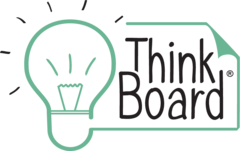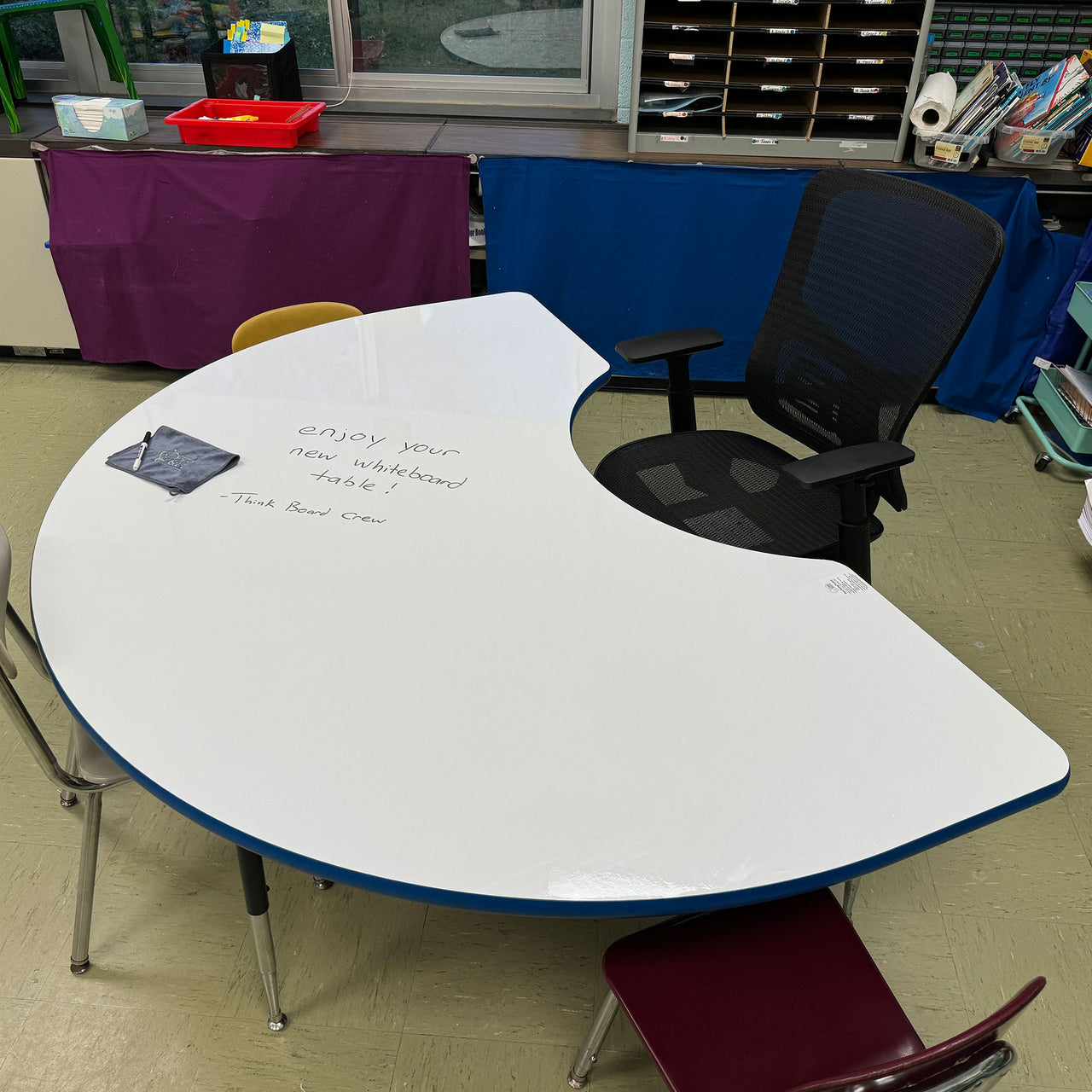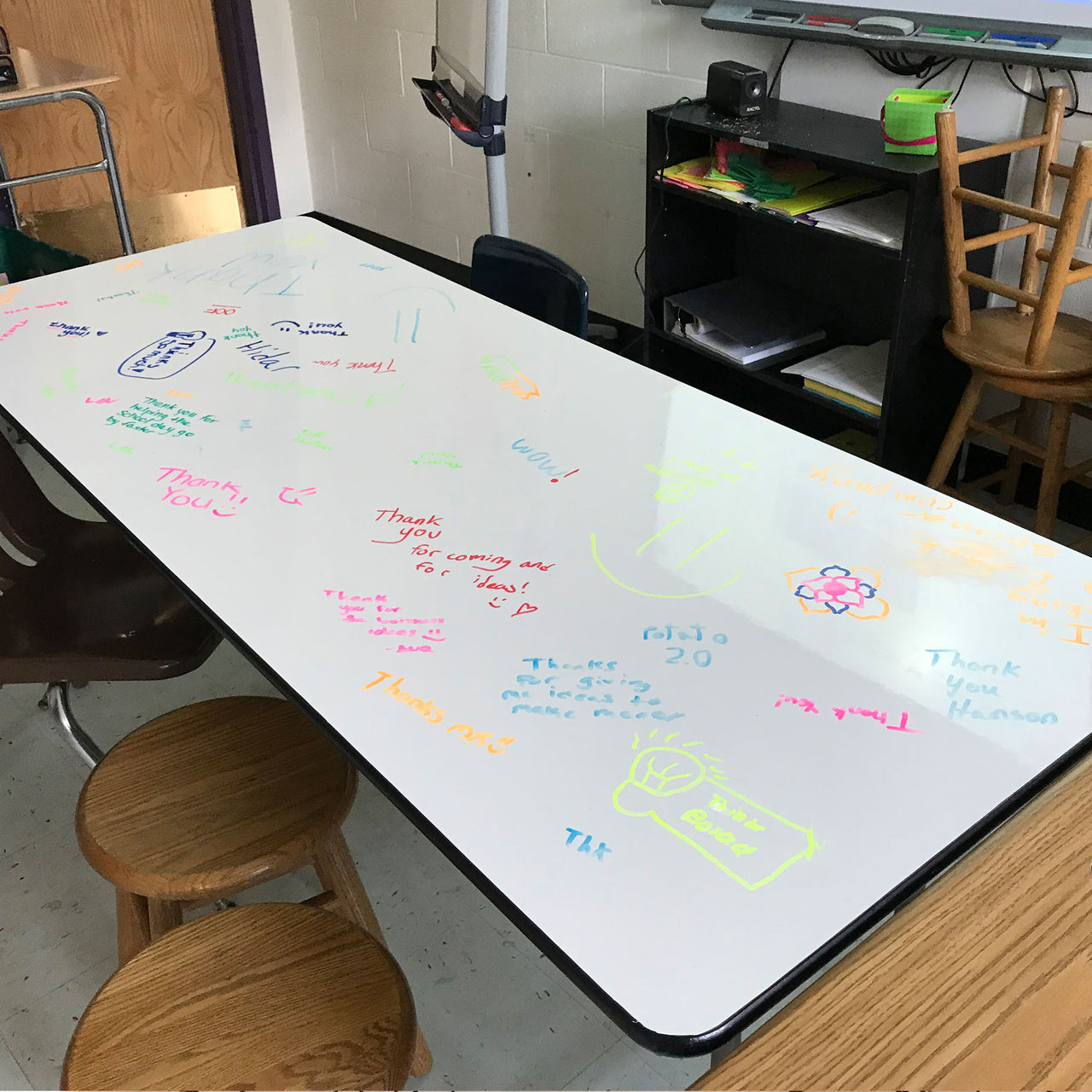Designing for Collaboration: The Power of Writable Surfaces
In today’s classrooms, collaboration is a key element of effective learning. As education continues to evolve, teachers and administrators are seeking ways to boost student engagement and foster creativity. Writable surfaces—like whiteboard walls, tables, and even cabinets—are essential tools for creating a dynamic, interactive learning environment.
These surfaces enable students to actively participate in the learning process, facilitating brainstorming, group discussions, and collaborative project work. They provide students with the freedom to engage with the material, their peers, and the classroom space, enhancing interaction and creativity.

Writable Walls: The Center of Collaboration
Writable walls are perhaps the most impactful tool for collaborative learning. With Think Board’s floor-to-ceiling, wall-to-wall magnetic whiteboard films, entire walls can become interactive learning hubs. Students can write, sketch, and annotate together in real-time, making the learning experience more engaging and collaborative.
Studies show that students retain information better and stay more engaged when they stand and work on vertical surfaces. Writable walls encourage physical movement, which promotes deeper learning and better information retention. This dynamic setup creates a space for group brainstorming, problem-solving, and sharing ideas, helping students engage more actively with each other and the material.

Resurfacing: A Cost-Effective and Sustainable Solution
For schools working with tight budgets, resurfacing existing surfaces, such as chalkboards or old whiteboards, with whiteboard films offers a cost-effective solution. Think Board’s premium whiteboard films can be applied to walls, doors, tables, and cabinets, instantly transforming them into functional writing spaces.
This method extends the life of existing classroom assets while upgrading them to meet the needs of modern learning environments. It’s a sustainable and budget-friendly alternative to costly renovations, allowing schools to refresh classrooms without the need for expensive replacements.
Writable Tables: Small Group Collaboration Made Easy
Writable tables are another great addition to the classroom. By applying Think Board’s whiteboard films to tables, educators can create spaces where students can actively engage with one another during group work. These surfaces encourage students to collaborate, share ideas, and create diagrams or mind maps as a team.
Writable tables foster communication and teamwork, making them an excellent tool for project-based learning. With collaborative spaces that are easy to access, students are more likely to interact and work together on tasks, promoting creativity and effective problem-solving.

Writable Cabinets and Doors: Unexpected Surfaces for Creativity
Writable surfaces aren’t limited to walls and tables. Think Board’s whiteboard films can be applied to doors, cabinets, and even lockers. These surfaces can become valuable writing spaces for students to brainstorm, sketch ideas, or leave notes.
By utilizing every available surface in a classroom, designers can maximize space and create an environment that promotes creativity and collaboration. Writable cabinets or doors can also serve as extra areas for group brainstorming, providing more opportunities for students to engage with their environment and each other.

The Physicality of Collaboration: Enhancing Engagement
Writable surfaces encourage students to get out of their seats, move around, and interact with their peers. The physical act of writing on vertical surfaces, such as whiteboard walls or tables, has been shown to improve cognitive function and increase information retention. When students engage physically with their learning environment, they stay more focused and retain more information.
In addition to enhancing engagement, this movement allows students to collaborate more easily. Whether they are standing at a whiteboard or writing on a table, students can actively participate in group activities, work together to solve problems, and share their ideas in a hands-on way.

Final Thoughts: Writable Surfaces for Modern Classrooms
Writable surfaces are crucial for fostering collaboration, creativity, and active learning in the classroom. Think Board’s products—whether applied to walls, tables, doors, or cabinets—help transform any space into a collaborative learning environment. These surfaces provide students with the freedom to engage with the material, interact with one another, and take ownership of their learning experience.
By creating dynamic, interactive classrooms, educators can encourage critical thinking, creativity, and teamwork, all of which are essential skills for success in today’s world. Writable surfaces are not just a design trend—they are a powerful tool for enhancing student engagement and collaboration.








